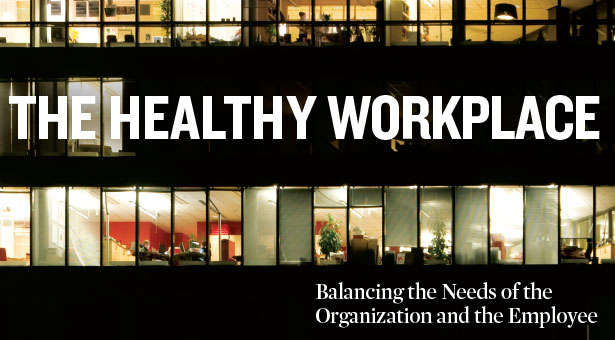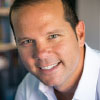
By Rob McKenna
A healthy workplace requires a healthy organization. But what does “healthy” mean when it comes to organizations? Many of the challenges in creating healthy workplaces come down to tensions between what is good for the organization and what is good for the people working within it. If leaders are able to identify and balance these tensions, it can transform the way they approach ensuring the all-around health of their organizations and its employees.
Since the beginning of my career in the field of industrial/organizational psychology, my goal as a scientist and as a consultant has been to assist these workplace transformations by using research to gain an understanding of what organizations are doing well, and what they could do better. In that process, my colleagues and I have observed some of the key tensions faced by organizations. Here are some examples:
Tension No. 1: Competence Versus Character
Competent people are obviously necessary to sustain healthy organizations, but what happens when those competent people lack character?
Research — and experience — shows that when leaders fill organizations with skilled people who lack integrity, honesty, patience, and compassion for others, they take a huge risk. You have only to think of news headlines in recent years to know what happens if a company is led or staffed by people who put their own interests before those of their organization or their colleagues.
“This definition of organizational and workplace health is in congruence with the principles of the Christian faith, and the intersection of my faith and the research I have conducted is as important to me as the research itself.”
What if we worked to clearly define what “character” looks like in leaders and employees, and then used that research to restructure how they are selected and developed? Selecting skilled and competent people is a good first step. A good next step puts character at the forefront of interview processes so that leaders begin to select people who will make good decisions, thinking intentionally about what is at stake for the organization, their colleagues, the public, and themselves.
Tension No. 2: Retention Versus Employability
One of the most targeted outcomes for organizations over the last two decades has been employee retention. Both organizations and researchers have been interested in the factors that keep people in their jobs. What we’ve seen, though, is that this is not necessarily what is uppermost in the minds of employees.
The challenge is that while organizations care about keeping their talented people, individuals are thinking about their own growth and employability. What if managers spent more time helping their workers learn and become more competent than worrying about whether they will leave?
It takes a courageous manager to think about developing people this way. Investing in employees means facing the fact that they may outgrow the opportunities the organization can provide for them. But while it is true that employees could leave because there are more options elsewhere, there is also the strong possibility that they will stay because of the investment an organization has made in them: a win-win situation.
Tension No. 3: Job Stretch Versus Job Satisfaction
While leaders struggle with retention versus employability, employees are facing a different tension. Is it more important to be satisfied with their jobs, or to have opportunities to learn and grow on the edge of their comfort zone?
A great deal of research has been devoted to the subject of job satisfaction. Everyone wants to know what it is that makes people satisfied with their work. Managers, social support, and the structure of a job certainly have an effect.
However, what are we missing when we focus our attention on making people satisfied?
Job stretch is a very different goal. We know that people learn best when they are challenged at the limits of their abilities, when there is a risk of failure, and when they are surrounded by others who support them.
When we define healthy organizations as places where people are stretched and supported as they take risks, the workplace looks very different. While there is nothing wrong with satisfied people, a healthy, innovative organization is driven by people who are learning, facing challenges, and trying new things. Encouraging people to take risks and to fail is a risky, courageous proposition, but creating such a high-stretch environment pays many dividends.
Reframing Organizational Health
Reframing organizational health from a focus on the needs of the organization, to a shared focus on the needs of the organization and the needs of the person, transforms the workplace. It changes the types of processes we invest in, how we manage and lead people — and how we think about ourselves in relationship to our jobs.
This definition of organizational and workplace health is in congruence with the principles of the Christian faith, and the intersection of my faith and the research I have conducted is as important to me as the research itself.
The transformation of the workplace is also a personal process. As a person working inside of my own organization, I ask myself what I can do in partnership with God to transform the place where I spend most of the day.
How can each of us contribute to healthy workplaces? We can strive to be people of character, even when it is contrary to the world around us. We can invest in the learning and growth of others, even if it costs us that promotion. And we can support each other when we take big risks, and work hard at holding each other accountable for performing well.
We all make healthy workplaces.

Rob McKenna is chair of SPU’s Department of Industrial/Organizational Psychology. He has consulted with such organizations as the Boeing Company, Microsoft, Foster Farms, and United Way, as well as a variety of church denominations and universities. As executive director of the Center for Leadership Research and Development in SPU’s School of Psychology, Family, and Community, his focus is on helping leaders set goals for themselves.
